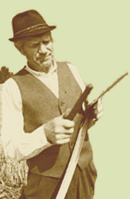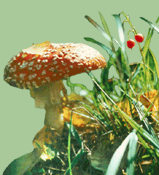Hydroenergy in Estonia is not green
Jaak Tambets, Rein Järvekülg and Meelis Tambets are convinced that the green hydroenergy is far from being sustainable or nature-friendly in Estonia. The acknowledged hydrobiologists describe the negative aspects of hydroenergy to riverine habitats and fauna as well as to society: the speedwater habitats upstream from the dam become damaged; the water volume of the river changes and the minimum water volume is decreased; the qualities of river water become deteriorated; dams become barriers for fish because of poorly designed fish ladders; the sediments behind the dam may cause major changes downstream if let go at once; economically, fish catch is notably decreased; often the environmental requirements to hydroenergy facilities are not met. Currently hydroenergy provides 0.2% of Estonias energy production and this is close to maximum potential. And still, the government has chosen to support hydroenergy, even though the theoretically obtained benefits from renewable energy are not even closely in balance with the environmental damage. Restoring the natural state of rivers is extremely expensive and often without success.
Hydroenergy can be green
Voldemar Enno does not share the opinion of hydrobiologists: he claims that hydroenergy can be produced without damages to nature. With numerous examples the author convinces the reader that the above-mentioned negative aspects are more complex, and often caused by other reasons that the creation of a dam.
Estonian Nature enquires
Tiit Leito writes about the compilation of the book Protected areas of Estonia.
Mare Mätas explains the activities of the foundation Kihnu Cultural Space.
Tree of the Year: ash manna the sweet and earthy gift of the Flowering Ash
Ain Raal speaks highly of the worldwide-known and gentle purgative, which is of help to those on special diet or having diabetes. The ash manna is the dried juice extracted from the flowering ash tree bark. The species does not grow in Estonia, but warmer areas of Europe and Asia Minor. The author gives the detailed chemical composition of manna drug. In pharmaceutics the manna is used for extracting mannithol.
The Tuulemäe spring fens as sites for filtering wetlands of a new waste dump
Anneli Palo draws attention to a valuable Natura 2000 habitat in Krootuse, Põlva County that is threatened by a planned waste dump. The author, a botanist, found the valuable orchid-rich flooded spring fens as well as other surrounding valuable habitats by the invitation of a local inhabitant. Unfortunately, one of the possible sites of a future large waste dump is located only 1.5 km upstream of the fens by the Piigaste River. This would mean serious changes for the valuable habitats around the river.
Luitemaa nature protection area
Marika Kose and Mati Kose introduce a protected area near Häädemeeste, created in order to protect coastal meadows, sand dunes and mire landscapes. The Luitemaa (Dune land) protected area encompasses the most impressive part of the South-West Estonian coastal and natural landscapes, including the countrys highest dunes and the largest coastal meadow. The area is inhabited by numerous bird species and over 500 plant species. The area is 11 050 ha large. In addition to meadows and dunes, one can see different types of mixed and deciduous forests as well as large fens and small spring fens. The Luitemaa nature protection area is situated along a main transportation road and is open to tourists, featuring several hiking trails and look-out towers.
European rarities in Estonia: Scarce Heath Coenonympha hero hero
Mati Martin describes a butterfly, common in Estonia still four decades ago, but becoming increasingly rare in Estonia as well as elsewhere in Europe. As is the case with many seemingly common species, this small butterfly is not much researched. The Scarce Heath is now protected in all European countries which it inhabits. The reasons for the decrease are still unclear.
Interview: Animals and babies are smarter than thought to be
Toomas Kukk has interviewed Jüri Allik, professor of experimental biology.
Hiking trail: The exciting hills of Kassinurme
Katre Palo recommends visiting a hiking trail in the Jõgeva County, with numerous natural and cultural sights. The area is situated on the Vooremaa drumlin field, topped with many kames. The hiking trail is 2.5 km long; there are also jogging track, bike and ski routes. Along the trail one can see ancient holy groves, large stones, different open sights, and a sight of an ancient settlement. The area is seasoned with numerous folk tales about the Estonian national hero Kalevipoeg.
Golf course as part of nature
Uku Paal does not consider golf courses as threats to nature; instead, due to groves, bushes and waterbodies the flora and fauna of a golf course may be more diverse than in the surrounding areas. Usually, 25-40% of the territory of a golf course is not intensely managed and form nice habitats for different species. If well planned, a golf course can be a rather safe and comfortable habitat for many birds, including rare ones. In addition, golf courses are easily accessible for ornithologists, and the local birds are mostly used to human presence.
The wild thyme blooms in midsummer
Urmas Kokassaar writes about the aromatic wild thyme, good as a medicinal herb as well as a food herb. Indeed, the plant has very variable uses, starting from being a pesticide in our wardrobes to a drug used in cough teas and an herb used for flavouring very various foods. The many names it has in folk tradition refer to ancient and active use of the plant.
Practical tips: Underwater photography
Peep Rada gives directions of how to practice a special branch of photography that requires special equipment and special skills. The limiting factors are also light conditions and the time that you can spend underwater. Most underwater photography equipment is conditioned for the depth of 45 m. Estonian water bodies are usually rather dark and water is not as transparent as in warm oceans. The article gives a good idea of the hardships and problems that an underwater photographer may encounter.
Fungi at our homes 2. House fungi
Kalle Pilt warns against unwanted fungi, which favour the high humidity conditions of many houses. The most common fungus in houses is the dry rot fungus, but there are many others as well. The article is supplemented with photos of the different house fungi and a table indicating the relation between the fungi and the temperature and humidity conditions of a house.
The Dothistroma needle bligh epidemic has reached Estonia!
Märt Hanso and Rein Drenkhan discovered the dangerous tree disease on our common pine trees. The epidemic is caused by a fungus and causes the pine needles to turn brown red cross stripes. The disease can affect and kill pine trees of all ages and on large territories.
| 

![[IN ENGLISH]](images/gb.gif)





